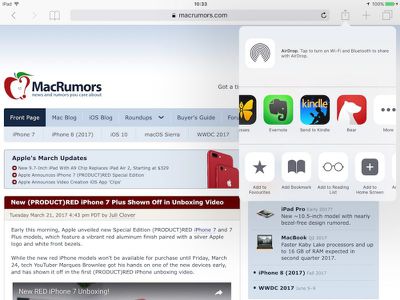Amazon has added a long-awaited Pocket-style read-it-later feature to its Kindle iOS app that allows users browsing the web to send articles to their Kindle device for offline reading.
Amazon has offered desktop Chrome and Firefox browser extensions to feed into its Send to Kindle feature for some time, but the company had not offered a Safari-compatible iOS solution until now.

The new feature works as a Send to Kindle extension in Safari's Share Sheet. After updating the Kindle app, users can add the extension by scrolling to the end of the first row of icons in Share Sheet, tapping the More button, and enabling it in the app list.
Users can find saved articles at the top of their library in the Kindle app as well as any Kindle devices associated with their Amazon account.
Articles are saved in Kindle format, meaning users can adjust their look in the usual way via the text, font, page color, and line spacing options. The articles are also compatible with Kindle features like dictionary lookup, translations, Wikipedia search, bookmarking, text highlighting, and annotations.
The read-it-later feature is included in the latest version of Kindle for iOS, which is a free download on the App Store. [Direct Link]




















Top Rated Comments